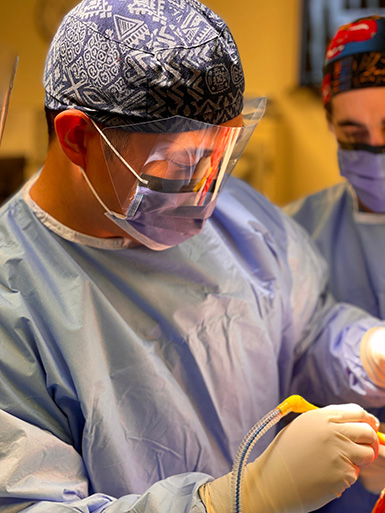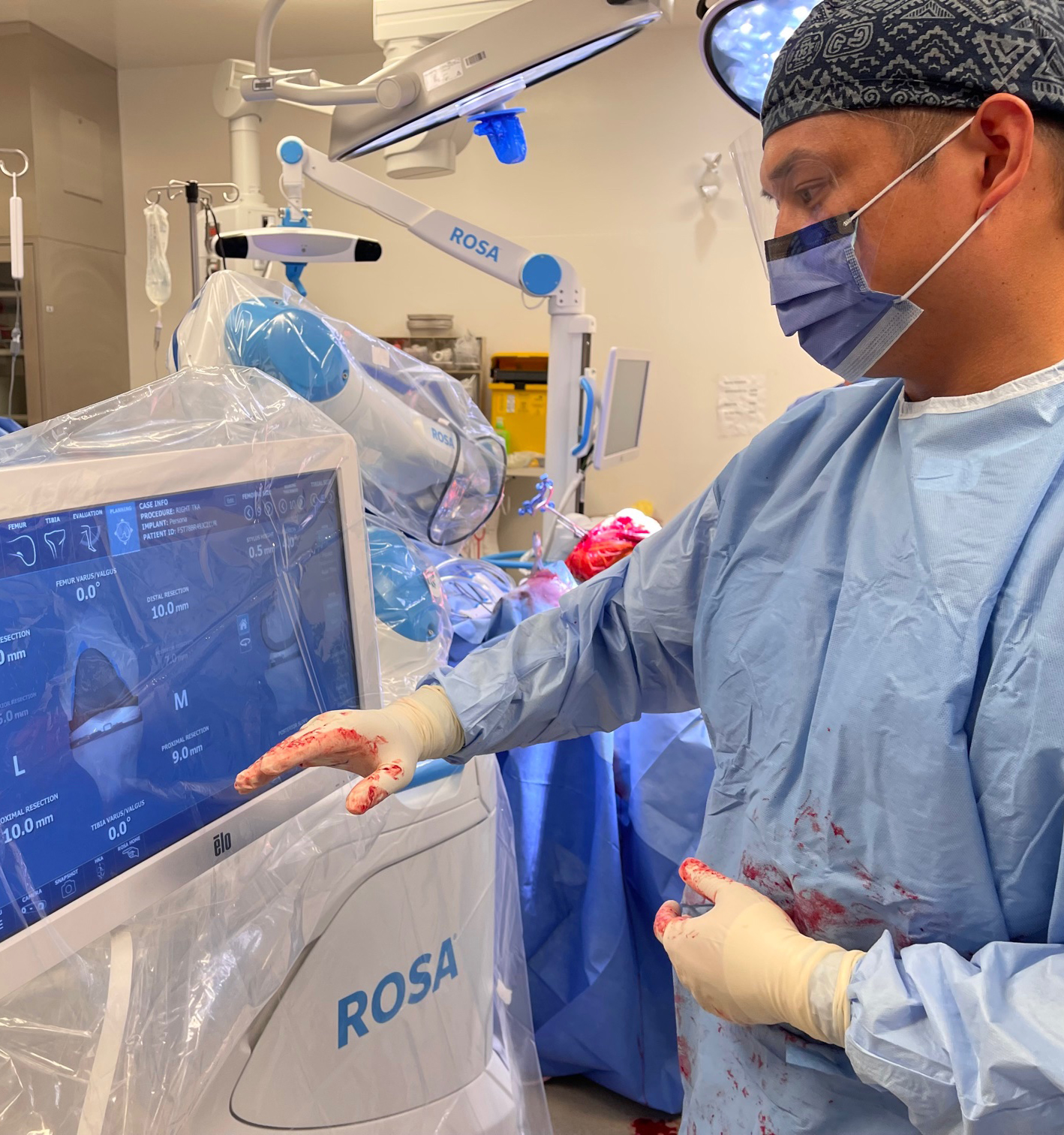A total knee replacement (or total knee arthroplasty) is a successful operation for end-stage knee arthritis.
The knee is a complex hinge joint that is made up of the bottom of the thigh bone (distal femur), the top of the shin bone (proximal tibia), and the kneecap (patella). The knee can be divided into three compartments including the inside of the knee (medial compartment), outside of the knee (lateral compartment), and front of the knee underneath the kneecap (patellofemoral compartment).
The most common indication for a total knee replacement is osteoarthritis, which is a degenerative disease that causes progressive loss of joint cartilage. Osteoarthritis can be isolated to one compartment of the knee or involve all three compartments (tricompartmental arthritis). Patients with knee arthritis experience knee pain and stiffness with walking and climbing the stairs. In addition, patients may describe progressive deformity of their knees, swelling, and difficulty with normal day-to-day activities.



